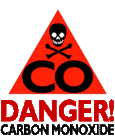
Tennessee OSHA Institutes Special Emphasis Program on 'The Silent Killer'
Carbon monoxide poisoning is a major source of injury and accidental death both in and outside of the workplace. According to the Tennessee Occupational Safety and Health Administration, five people were hospitalized from a single exposure to carbon monoxide in 2007. In 2005, two people died from carbon monoxide exposure by running propane buffers, both of which occurred in the workplace.
In addition, the Tennessee Department of Health reported that in 2006 there were 11 unintentional deaths due to carbon monoxide poisoning and approximately 150 people that suffered carbon monoxide-related injuries. In 2007, six more people died as a result of carbon monoxide poisoning in Tennessee.
"Because carbon monoxide is known as the silent killer we feel it is very important to familiarize employers and employees with the necessary precautions to prevent their workers from being harmed," said Jan Cothron, TOSHA industrial hygiene manager, noting that the agency has instituted a Special Emphasis Program for carbon monoxide. The program was established to focus statewide attention on the problem, reduce employee exposure and eliminate deaths.
TOSHA recommends that employers follow these few simple safety rules to lower the risk of exposure to their employees:
- Install an effective ventilation system to remove carbon monoxide.
- Maintain appliances and equipment in good order (preventive maintenance).
- Consider switching from fossil-fuel powered to battery-powered equipment.
- Ensure compressors used to supply breathing air are equipped with a high temperature alarm, a carbon monoxide alarm, or use compressors that are not oil lubricated.
- Install carbon monoxide monitors or regularly test the air in areas where carbon monoxide is generated.
- Use gasoline, propane, or diesel powered engines only in a well-ventilated area.
- Instruct workers in the hazards, signs, and symptoms of carbon monoxide exposure.
For more information on carbon monoxide poisoning and workplace safety, visit http://news.tennesseeanytime.org/node/520.